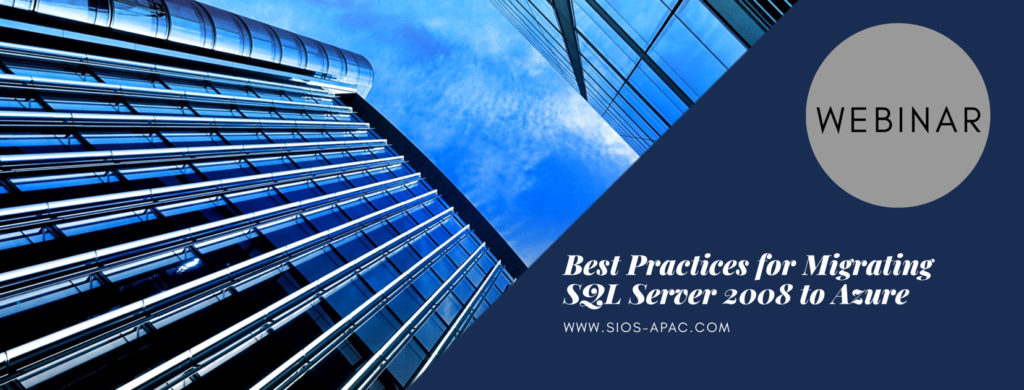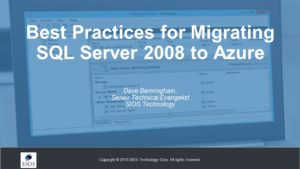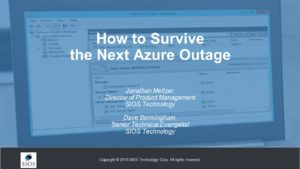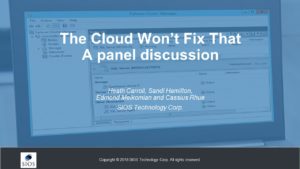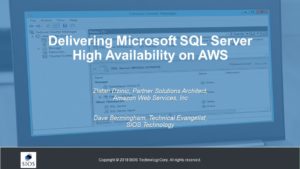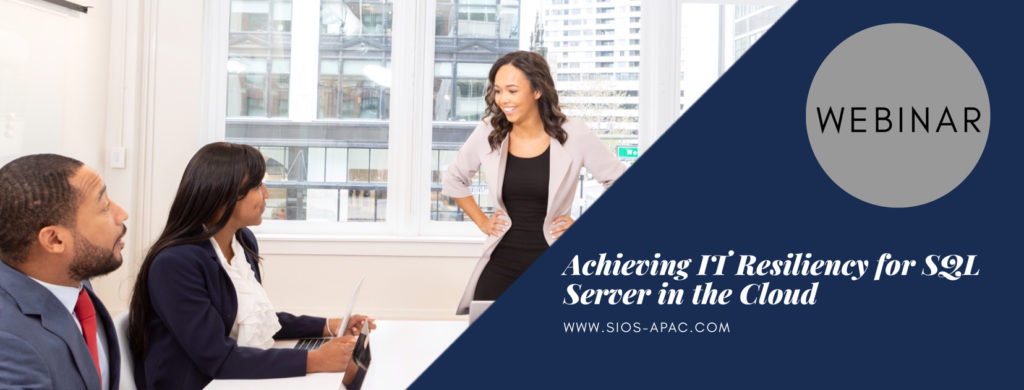| May 24, 2019 |
Webinar: Best Practices for Migrating SQL Server 2008 to Azure
Webinar: Best Practices for Migrating SQL Server 2008 to AzureMicrosoft announced that Extended Security Updates will be available for free in Azure for 2008 and 2008 R2 versions of SQL Server and Windows Server to help secure your workloads for three more years after the end of support deadline. That means if you are running SQL 2008 or 2008 R2 on-premises today and won’t have time to upgrade before the regular end of life of SQL Server 2008 and 2008 R2 on July 9th 2019, your best course of action to keep these systems secure would be to migrate those workloads into Azure. Microsoft Cloud and Datacenter MVP David Bermingham discusses best practices for moving standalone and clustered SQL Server 2008 instances into Azure to take advantage of these extended security updates. See our SQL Server 2008 End of Support solution to help you maintain security and compliance for your SQL Server environments. Register Webinar: Best Practices for Migrating SQL Server 2008 to Azure |
Webinar: Survive Azure outage with High Availability and Disaster Recovery
Webinar: How to survive the next Azure outage with High Availability and Disaster Recovery solutionsIt is up to you to ensure you have covered all the bases when it comes to your disaster recovery plan. Not everyone needs all of their applications to be available all of the time. However, after witnessing the Azure outage of 2018, you want to make sure that you have High Availability and Disaster Recovery solutions in place to keep your business running optimally in the event of another outage. This webinar reviews the options for High Availability and Disaster Recovery in the cloud and the levels of availability and trade-offs you will achieve with each option. |
|
Webinar: The Cloud Won’t Fix That – A panel discussion
Webinar: The Cloud Won’t Fix That – A panel discussionThe journey to the cloud is new and exciting, but can also be daunting and unpredictable. What? Won’t cloud solve all my problems? The short answer is no. There are still many things YOU will need to do. There are many different issues you will need you to manage when you move to the cloud. A panel of experts discusses best practices within enterprise application migrations to the cloud. Register Webinar: The Cloud Won’t Fix That – A Panel Discussion |
|
Webinar: Delivering Microsoft SQL Server High Availability on AWS
Webinar: Delivering Microsoft SQL Server High Availability on AWSYou can use AWS services like Amazon EC2 and Amazon RDS to quickly build, deploy, scale and manage your SQL Server databases, which helps you build more agile applications. This webinar covers best practices for running SQL Server business-critical applications on AWS. Zlatan Dzinic, of AWS, and Dave Bermingham, of SIOS Technology Corp., discuss how to choose between Amazon EC2 and Amazon RDS, and above all, get an overview of the AWS highly reliable, scalable and low cost infrastructure combined with SIOS DataKeeper for high availability platform – providing customers with a powerful solution to ensure improved IT responsiveness and compelling ROI for business-critical applications. Register Webinar: Delivering Microsoft SQL Server High Availability on AWS |
|
| May 23, 2019 |
Webinar: Achieving IT Resiliency for SQL Server in the Cloud
Webinar: Achieving IT Resiliency for SQL Server in the CloudWhat is IT resiliency and what does it mean for your environment? Microsoft Cloud and Datacenter MVP David Bermingham explains how to achieve IT resiliency for SQL Server in the Cloud. Common misperceptions are debunked and high availability nuances between the major cloud service providers are explored. Register Webinar: Achieving IT Resiliency for SQL Server in the Cloud |
